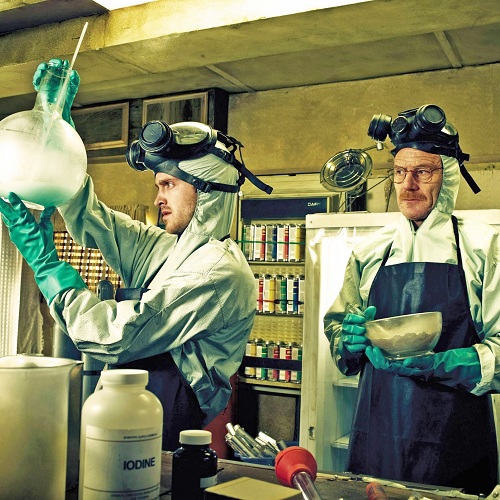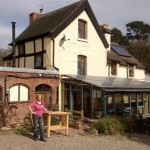 You don’t have to be terminally ill to run a meth lab but it’s probably not a bad idea. If you’re not already terminally ill, without some fairly serious precautions, you’ll probably end up that way anyway.
You don’t have to be terminally ill to run a meth lab but it’s probably not a bad idea. If you’re not already terminally ill, without some fairly serious precautions, you’ll probably end up that way anyway.
While the main character in “Breaking Bad” may have very little to lose, plenty of prospective home buyers in the US have found to their peril that the proliferation of cook houses (we’re not talking steak here) during the recession, combined with the availability of cheap foreclosure properties can lead to some environmental issues on a deadly scale.
In the past, radius map searches have focused on all manner of potential contaminants in and around a property – both current and historic – and now it seems the former use of the property itself should include a search that includes the presence of clandestine drug labs.
What’s the Problem
While more common environmental contaminants include leftover chemicals from the dry cleaning process (either in former premises or those close by) methamphetamine production has recently hit the headlines as a rising environmental issue. The process of making meth – and even smoking it – is highly dangerous and leads to serious contamination.
Apart from the risk of explosions, the process involves also leaves behind a toxic cocktail of chemicals. These saturate every fibre of the building, including the walls, carpets, ceilings, floors and even the air. In addition to the traces of meth, you’ll find mercury, lead, lithium and iodine thoroughly soaked into the fabric of the structure. The cocktail is lethal and can lead to damage to the nervous system, liver and can be responsible for birth defects. The very young and very old, along with anybody with chronic health conditions, are particularly vulnerable but even those with good levels of health are likely to suffer from the effects of contamination.
Where’s the Problem
Meth cook houses can be disarmingly difficult to identify. They’ve been found in all sorts of odd locations from a back-pack (a cyclist caught infringing several traffic regulations in Columbus was found to also have a meth lab quietly cooking away in his back pack) to a portable toilet at a golf course. Purses, nursing homes, church kitchens have all been also been amongst the more refined locations for this particular refining process.
When it comes to real estate, the problem is that you cannot assume that a nice home in a nice neighborhood is any cleaner than a less desirable property in a more dubious neighborhood. Meth labs have been found in just about every type of property and every type of neighborhood.
Potential buyers rarely have the opportunity to assess a property based on the more obvious clues that suggest a property has been used as an illegal chemistry lab; streams of late night visitors, poor living conditions, regular visits from the local police department and general dilapidation. However, some checks on the history can help; foreclosures feature high on the list – labs often get abandoned and trashed; small family houses are more commonly used than apartments or condos, as they offer some level of privacy for those who dislike being disturbed while they work. Neighbors, if they’re willing to chat, along with the local police department or Health Department may be able to identify issues with the property’s history.
State Protection
Increasingly protection for buyers is coming through state legislation; however different states offer different levels of protection. California, Colorado and some other states currently require sellers to disclose (and certify in the contract) that a property has never been used for meth production. This is one of the more robust state laws, but many others require detailed disclosures that include historic uses.
This is important because state law is increasingly tightening up on environmental clean-up and will require you to foot the bill regardless of whether you were aware of the property’s history.
Using a home inspector that has access to the highest quality environmental reports that include details of clandestine drug production locations (meth production is often clustered in specific areas) along with access to detailed historical reports is the most sensible option. Radius maps online feature reports detailing thousands of clandestine drug facilities. Many inspectors will be familiar with the problem and may help to identify the need for a professional test on the property (advisable if you or the inspector have suspicions) while an amateur testing kit can also be used.
Although there has been a rapid growth in the number of properties used for drug production in the majority of cases a property will have a ‘clean’ history; however, a careful, thorough check on its history is the most sensible way to be confident that your new home has no environmental issues of its own.
AUTHOR: Marshall Peterson is a writer with an interest in property development and real estate. He recommends potential purchasers ensure their dream home has a drug free history.
 Can Green Homes Gain Momentum in the Real Estate Market?
Can Green Homes Gain Momentum in the Real Estate Market? Adios Chlorine, Hello Natural Swimming Pool!
Adios Chlorine, Hello Natural Swimming Pool! The Super Homes Project Volunteers Band Together for Low-Carbon Living in UK
The Super Homes Project Volunteers Band Together for Low-Carbon Living in UK
I loved watching Breaking Bad because of the character development, but this is a great take on the whole trend that’s obviously, and unfortunately, developing.
No kidding Alissa… God only knows how many people were actually inspired to start a “business” after they watched that show. 🙂
I’d rather not know, to be honest 😉